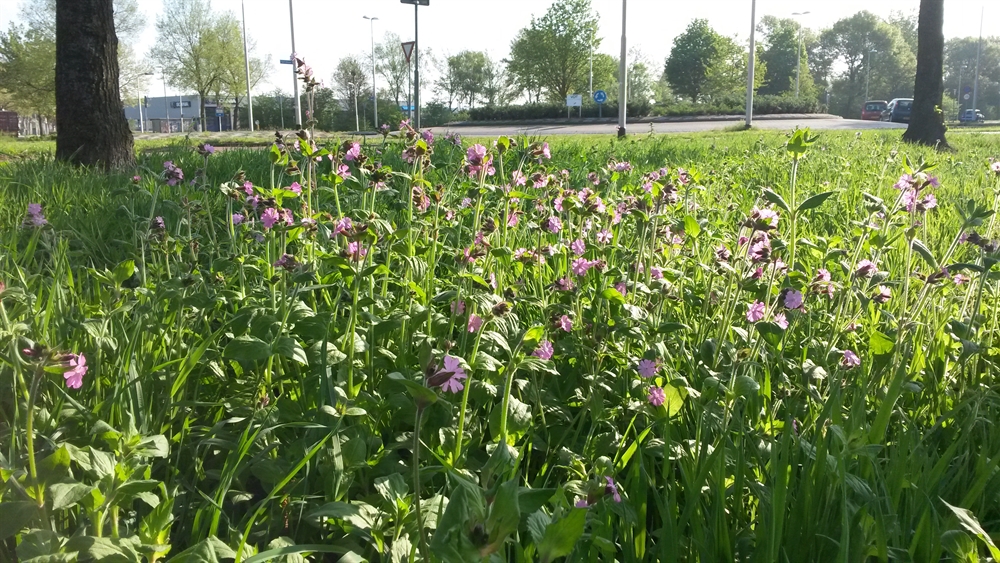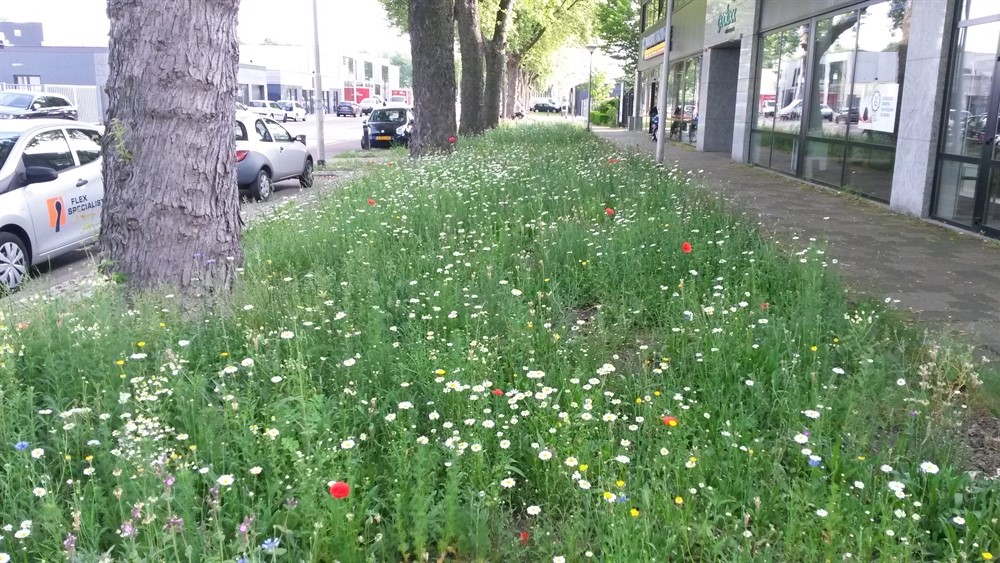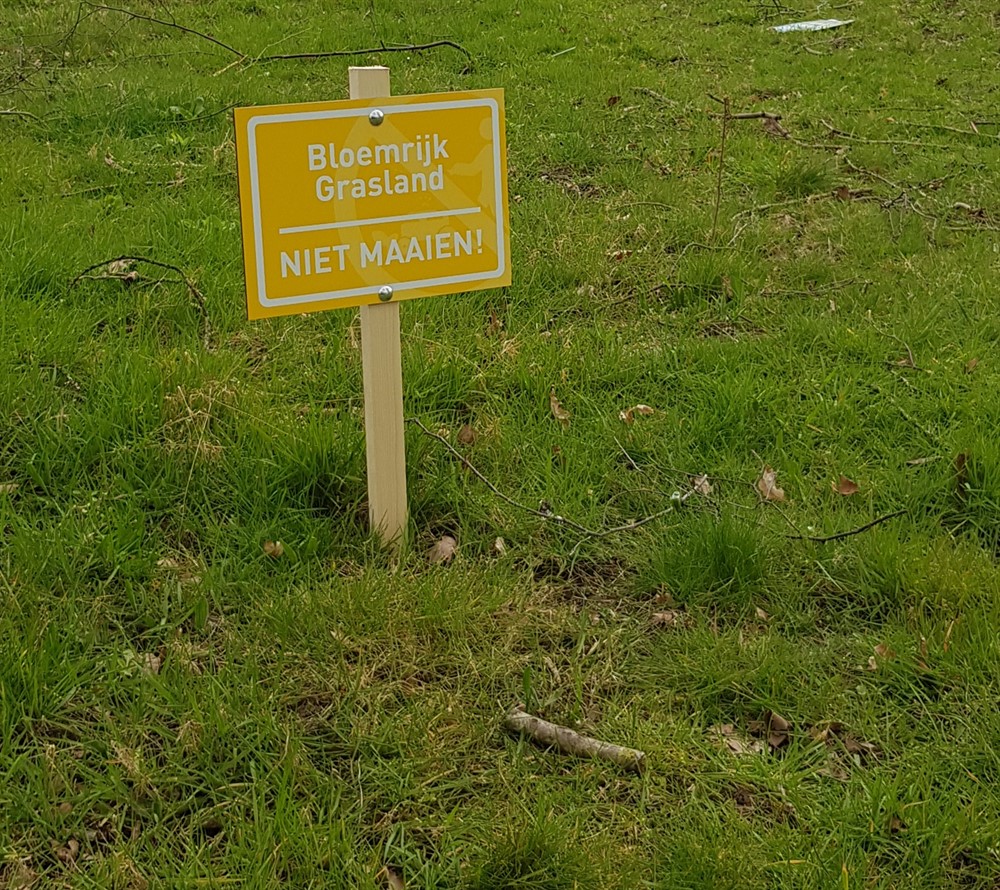Climate adaptation and biodiversity at florid industrial estate in Tilburg
The Loven industrial estate in the city of Tilburg had already been adapted for rainwater collection. In 2017, Geofoxx environment experts came up with the idea to additionally tackle the biodiversity challenge. Thereupon, the municipality commissioned Geofoxx to seed more than 1 hectare of roadsides with a flower seed mix.
Climate adaptation goes well with biodiversity measures
To some extent, the decline in biodiversity is caused by climate change, as is the increase in heat, drought, and waterlogging. Are you embarking on climate adaptation? That would be a good time to address biodiversity as well. The Loven industrial estate already featured drainage canals and a pond for buffering rainwater. Furthermore, it had wide grass verges with trees to combat waterlogging and heat. Grass is conducive to climate adaptation but does little in terms of biodiversity. That is why Geofoxx came up with the idea of flowery verges. Diverse and high-quality greenery not only reduces the effects of the changing climate but also enhances biodiversity.

How has the project been carried out?
Geofoxx presented its flowery verges idea to the municipality of Tilburg, which responded with great enthusiasm. The municipal policy is aimed at expanding and enhancing ecological structures. The idea of a green industrial estate with room for biodiversity and enjoying the greenery tied in well with this view. The municipality commissioned Geofoxx to elaborate a pilot plan, in consultation with a greenery maintenance body, business organisations, and several companies in the vicinity of the verges. The consultants have converted the verges surrounding the Gelrebaan and part of Jules Verneweg to flowery green areas. To this end, the greenery maintenance staff removed the upper 10 cm of the verges and seeded the soil with a mix of indigenous flower seeds.

Results
It is quite obvious that the flowery verges are generating more biodiversity than regular grass verges. They serve as a connecting area and habitat for unique plants, bees, butterflies, and birds. Furthermore, the greenery enhances the quality and the appearance of the living environment, which boosts the image of the Loven industrial estate. The municipality of Tilburg is pleased with the results and working on an expansion of the project.
Insect counting route to monitor results
Several Geofoxx staff have participated in a workshop organised by the Dutch Butterfly Conservation foundation (Vlinderstichting). They checked the flowery verges for butterflies, bees, bumblebees, et cetera. Furthermore, during the workshop, they plotted a counting route. Regularly counting the numbers of butterflies and bees along this route will enable the staff to monitor the long-term results of the flowery verges.

Lessons to be learned
The main lesson to be learned is that it is vitally important to set down sound agreements with the greenery maintenance body regarding mowing. In terms of maintenance, flowery verges require a different approach from ordinary grass verges. Preferably, flowery verges are mowed and cleared once or twice a year, depending on the nutriment content of the soil. In the plan development phase, the municipality had set down a pertinent agreement with the greenery maintenance body, but unfortunately the staff mistakenly mowed one of the verges too soon, as a result of which the flowers did not have time to bloom. That is why the Loven estate now has signs stating “Flowery Grassland, DO NOT MOW!”
Other lessons to be learned:
- Some people park their cars or lorries on the verge, which damages the flowers. At such locations, flowery verges hold less potential.
- In the summer of 2018, the verges in the industrial estate dehydrated as a result of the heat.
Contact person
Luuk de Vetten
Geofoxx
l.devetten@geofoxx.nl
